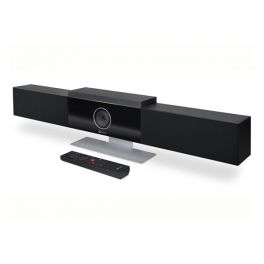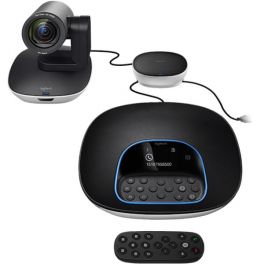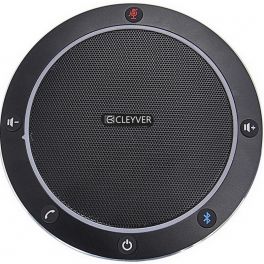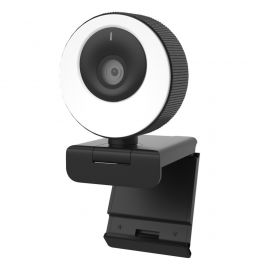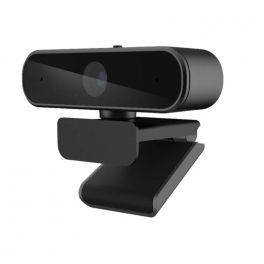
Google Meet: the definitive guide to using it!
When it comes to video conferencing tools, there is no shortage of options. And while each of them offers a number of tempting features, in this guide we've decided to focus on Google Meet.
An introduction to the platform, details of its features, a guide to getting familiar with Google Meet, pro tips... Everything you need Know about the service before starting, we have it here:
Discover Google Meet: What exactly is it?
In a nutshell: Google Meet is Google's video conferencing service, the successor to Google Hangouts and Hangouts Meet within the Google Workspace suite (formerly G-Suite).
At the same time, Google offers Workspace Essentials, a solution dedicated to collaborative work that includes:
Google Meet: the audio and video conferencing tool
Google Drive: the cloud file storage platform
Google Docs: a document editor in SaaS mode
The Google Meet app, previously intended only for professionals, is now available to all Google account holders.




Features of the Google video service
Consumer or Workspace edition, discover for yourself everything you can do with Google's video calling service:
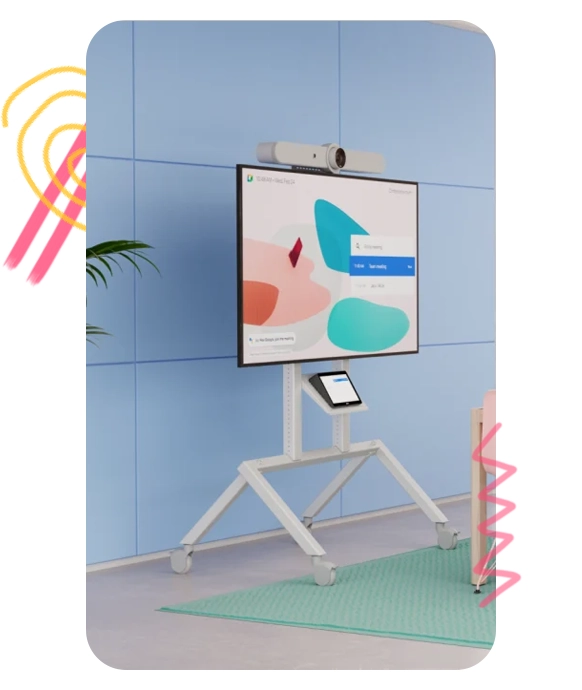
Audio and video calls and meetings:
Schedule and launch immediate or deferred meetings
Participate in small group sessions
Make individual or group voice or video calls (via Meet or with a phone number)
Collaborate in real time (screen sharing, whiteboard, etc.)
A little advice: the more of us, the better, don't you think? Add people during the meeting by clicking "Participants" on the right and then "Add." Enter the name or email address and you're done!
Messaging and chat:
Send instant messages during calls (even during screen sharing)
Share links, files and more with other participants
Good to know: sending messages is an ephemeral function, only available during meetings.
Shared screen:
Screen mirroring: share windows, tabs, presentations and all types of content
Shared whiteboard: collaborative work on diagrams or plans through Jamboard
Live subtitling:
Real-time transcription of what each participant says
Follow the meeting with automatic subtitles
Only available in English
Recording and broadcasting of meetings:
Transcription of live meetings with external participants
Video conference capture with delayed viewing option (automatic backup)
Note: Recording is only available on PC and select editions of Google Workspace (see rates and options here).
Add filters, effects and reactions:
Filters: Add virtual masks and accessories to your face and head (only available in the Google Meet mobile app)
Picture-in-Picture: Shows the meeting in a small window that overlaps the other windows (Google Chrome only)
Reactions: Live interaction with other participants using emojis
Raise your hand: Notify the moderator if you wish to intervene (question, comment, etc.)
Commands for organizers:
Participant Management: Pin or exclude participants
Call control: Mute the call, disable chat or screen sharing
Audio and video blocking: Deactivating other participants' microphones and cameras (can only be reactivated by the meeting host)
Cross-platform compatibility:
Cross-platform: Accessible on all laptops and desktops (Windows and macOS)
and mobile devices (Android or iOS)Third party applications: Integration with all Microsoft Office and Google applications (Outlook, Gmail, etc.)
Interoperability: Compatibility with meeting systems based on SIP and H.323 standards through the Pexip Infinity platform
Security and Compliance:
Anti-abuse feature: Fight against hacking and intruders who want to enter meetings without invitation (PIN code required to join a meeting via a phone number)
Encryption in transit: Encryption of meetings in transit between the company and the client (conforming to IETF security standards).
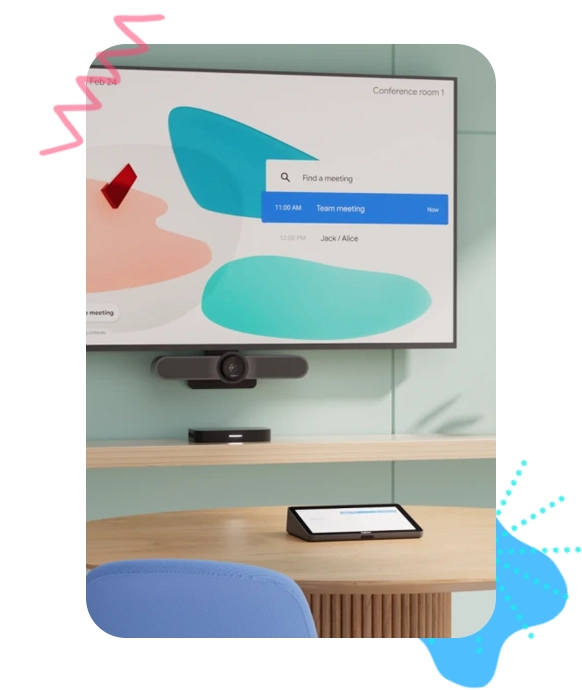
Google Meet: free or paid?
There is no doubt: Google Meet has a free version and several paid rates. But unlike its direct competitors (such as Microsoft Teams), Google does not offer exclusive rates for the Meet video service. What does this mean? It means that the collaboration platform is integrated into Google Workspace, as is:
What better way to clarify the situation than with a small comparison table that summarizes the options available for each Google subscription?
Business Starter
£4.60
per month and per user
(1 year of stay)
Business Standard
£9.99
pair of months and per user
(1 year of stay)
Business Plus
£14,99
per month and per user
(1 year of stay)
Enterprise
-
per month and per user
(1 year of stay)
Using Google Meet: the step-by-step guide
Isn't he a computer genius? Do not panic. Using Google Meet is accessible to everyone thanks to its intuitive management interface. For the less geeky, we've even created a guide to get familiar with the app and get the most out of it. To know how, click here:
1. Online: Visit meet.google.com from your computer or mobile device.
2. Via mobile app: Download the app from Google Play Store or App Store.
1. Create an instant meeting:
- Click the "New Meeting" button
- Select "Start an instant meeting" to start the meeting immediately
- Click "Add participants" to invite your colleagues (via a email or generating a meeting code)
2. Schedule a delayed meeting:
- Click on "New meeting"
- Select "Create a meeting for a later date"
- Send the generated link to the people you want to invite (email , text message, it's up to you!)
3. Schedule a delayed meeting using Google Calendar:
- Click "New Meeting"
- Select "Schedule in Google Calendar"
- Enter a name and subject for the meeting
- Enter the desired date and time
- Manually add guests (via your address book or email address)
1. Go directly to Google Meet or use your Google account (via Gmail address)
3. Select the planned event (in Meet), or enter the code provided by the organizer Click "Join meeting"
4. Simply click on "Join the meeting"
1. Go to the website meet.google.com
2. Select "Start a new meeting."
3. In the upper right corner, click "Camera Locked - Unauthorized Media".
4. Select "Always allow https://meet.google.com access to your camera and microphone."
5. Click "OK" and connect again.
1. On a computer:
- Go to “Submit now” at the bottom of the screen.
- Choose between "Whole Screen", "One Window" or "One Tab".
- Change the tab by choosing the new one and clicking "Share this tab instead".
- Click "Share"
2. In the Google Meet app:
- Tap the "More" button
- Select the "Share Screen" option
- Tap "Start Sharing" (Android), or "Start Casting" (iOS)
Good to know: Your video stream (camera) remains active while you share your screen.
1. Blur a background:
- In Google Meet, select a meeting
- In the bottom right corner, click "Edit background"
- C Choose between "Blur background" or "Slightly blur background"
- Click "Join" the meeting".
2. Add a background:
- In Google Meet, select a meeting
- In the bottom right corner, click "Change background".
- Choose an existing photo or add a new one by clicking "Add".
- Click "Join Meeting".
Pro tip: Create your meeting directly after Outlook! Comment ? Next, proceed next to the “calendrier” heading for your electronic messages.
